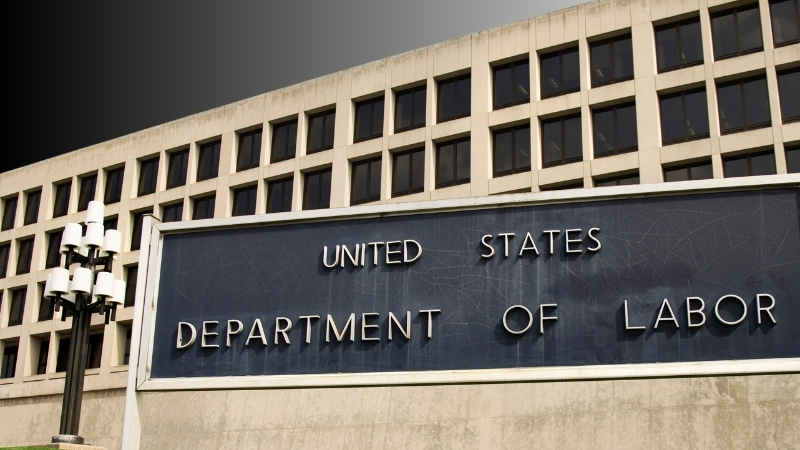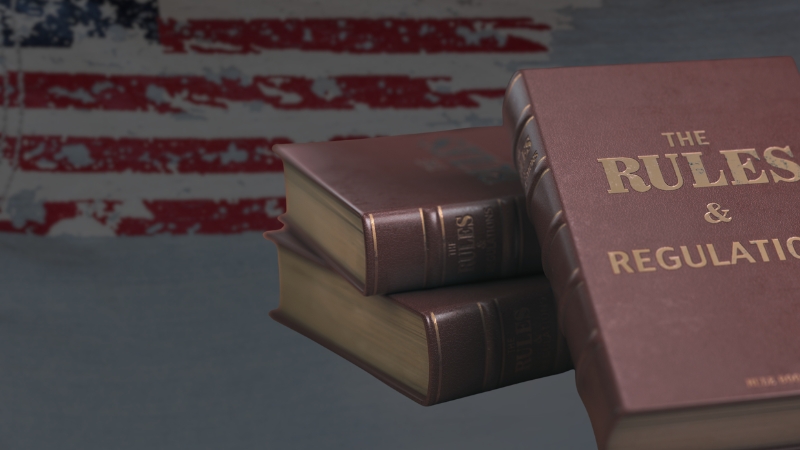In 2025, the U.S. Department of Labor (DOL) announced a sweeping rollback of several workplace rules that had been implemented or expanded over the past decade. The move marks a significant shift in federal labor policy, reflecting new priorities in Washington and a broader effort to reduce regulatory burdens on businesses.
For employers, the changes create both opportunities and risks: compliance costs may fall, but uncertainty and legal disputes are likely to rise as states and unions push back against federal deregulation.
This rollback does not happen in a vacuum. Over the past five years, federal agencies have pursued ambitious rules on overtime eligibility, independent contractor classification, joint-employer liability, wage transparency, and workplace safety standards.
Many of these rules were challenged in court, delayed, or inconsistently enforced.
The 2025 repeal package attempts to resolve these disputes by removing or weakening rules seen as overly burdensome. But it also raises pressing questions: how will employers adapt, how will states respond, and what does it mean for workers whose protections are being scaled back?
The Scope of the Rollback
The Department of Labor targeted rules that had the greatest economic and compliance impact on employers. Several of the most controversial were either fully repealed or revised to narrower versions.
| Regulation Area | Previous Rule (2020–2024) | Status in 2025 Rollback | Key Change |
| Overtime Thresholds | Expanded overtime eligibility to workers earning up to $55,000 annually | Repealed | Reverts to earlier federal threshold (~$35,500) |
| Independent Contractor Classification | A broader test made it harder to classify workers as contractors | Repealed | Restores a narrower test, easier to classify contractors |
| Joint Employer Standard | Made franchisors and parent companies liable for subcontractor labor violations | Repealed | Liability limited to direct control cases |
| Wage Transparency Rules | Required large firms to disclose pay ranges in job postings | Repealed | Left to states; no federal disclosure requirement |
| Ergonomic Safety Standards | Proposed mandatory ergonomic assessments for warehouses and offices | Withdrawn | Only voluntary guidelines remain |
The rollbacks affect a wide range of industries, from retail and logistics to hospitality and healthcare. Employers who spent years adapting to the rules now face the challenge of revising compliance systems yet again.
Overtime Eligibility – A Step Back
Perhaps the most visible rollback involved overtime pay. In 2023, the Department of Labor finalized a rule raising the salary threshold for overtime eligibility to $55,000 annually, meaning millions of mid-level supervisors and professionals would have qualified for time-and-a-half pay.
Business groups argued the rule would increase payroll costs dramatically, particularly in industries like retail and food service, where many employees earn just above the older threshold.
The 2025 rollback eliminates this expansion and restores the older level of $35,500. For employers, this reduces payroll expenses and administrative burdens tied to tracking overtime hours. For workers, however, it means longer hours without additional pay.
The Economic Policy Institute estimated that repealing the rule denies overtime protections to roughly 3.2 million workers nationwide, disproportionately affecting women and younger employees.
Independent Contractors – Redefining the Workforce

The classification of workers as employees or independent contractors remains one of the most contentious issues in U.S. labor law. The stricter rule implemented in 2021 required businesses to apply a multi-factor “economic realities” test, making it harder to classify gig workers as independent contractors.
This posed major compliance challenges for companies in transportation, delivery, and digital platforms, where flexible labor models depend on contractor classifications.
The 2025 rollback reinstates a narrower test focused on employer control, making it easier for businesses to argue that workers are independent contractors. For gig economy platforms, this is a major win, as it relieves them of obligations to provide minimum wage, overtime, and benefits to millions of drivers and couriers.
However, it also reopens debates over worker exploitation, as contractors often earn less predictable income and lack health insurance, unemployment benefits, or retirement security.
Joint Employer Standards – Narrowing Liability
Under the 2020s rules, companies could be deemed joint employers if they exerted indirect control over workers employed by subcontractors, staffing agencies, or franchisees. This significantly expanded liability for wage and hour violations, forcing large corporations to oversee compliance across complex supply chains.
The 2025 rollback narrows the standard, restoring the requirement of direct and immediate control. For franchisors and parent corporations, this reduces exposure to lawsuits. For small businesses and franchise owners, it may provide breathing room.
Yet critics argue it weakens accountability in industries where low-wage workers rely on subcontracted or franchise labor models, such as fast food, hospitality, and warehousing.
Wage Transparency and Pay Equity
View this post on Instagram
One of the more controversial repeals involves federal wage transparency rules. Between 2022 and 2024, large employers were required to disclose salary ranges in job postings and provide annual reports on gender and racial pay equity. This was hailed by labor advocates as a step toward closing pay gaps that persist across industries.
The 2025 rollback eliminates federal mandates, leaving wage transparency to the discretion of states. Already, states like New York, California, and Colorado have pledged to keep such rules in place, while others are unlikely to act.
This creates a patchwork environment: workers in some states will continue to see pay ranges in postings, while others return to opaque systems. Employers operating in multiple states must now decide whether to maintain national transparency practices or scale back in jurisdictions without mandates.
Workplace Safety and Ergonomics
Finally, the DOL abandoned a proposed national standard on ergonomic safety, which would have required warehouses and office-based employers to conduct assessments of repetitive motion and workplace strain. The proposal was driven by rising injury rates in sectors like e-commerce, where Amazon warehouses reported injury rates almost twice the industry average.
The 2025 withdrawal leaves only voluntary guidelines, meaning employers can set their own standards without fear of federal enforcement. For businesses, this reduces compliance costs. For workers, it raises concerns that musculoskeletal injuries, which account for nearly 30% of all serious workplace injuries, will continue at high rates.
Federal vs. State Power After the Rollback
The repeal of federal rules does not leave a vacuum; states are already stepping in.
| Policy Area | Federal Rule After Rollback | Example of State Action |
| Overtime | Federal threshold back to $35,500 | California’s threshold is $62,400 |
| Independent Contractors | Narrow test, easier classification | New Jersey maintains a stricter “ABC test” |
| Wage Transparency | No federal mandate | NY and CA require pay ranges in postings |
| Ergonomics | Voluntary guidelines | WA and OR are exploring mandatory warehouse standards |
This divide means employers must navigate different rules depending on geography. Multi-state businesses face compliance fragmentation, while workers’ protections increasingly depend on where they live.
Implications for Employers

Companies must weigh whether to maintain uniform national standards or tailor practices to each state’s rules.
| Area | Employer Benefit | Employer Risk |
| Overtime | Lower payroll costs | Employee dissatisfaction, turnover risk |
| Contractor Classification | Greater flexibility in gig models | Legal challenges in stricter states |
| Joint Employer Liability | Reduced exposure to lawsuits | Reputational risk if abuses surface |
| Wage Transparency | Freedom from federal mandates | Patchwork compliance, reputational concerns |
| Safety | Lower compliance costs | Higher injury rates, workers’ comp claims |
Conclusion – What Employers Need to Do Now
@nbcnewyork The U.S. Department of Labor plans to rewrite or repeal more than 60 “obsolete” workplace regulations, ranging from minimum wage requirements for home health care workers and people with disabilities to standards governing exposure to harmful substances. The Labor Department says the goal is to reduce burdensome rules imposed under previous administrations. #workersrights #trumpadministration#jobs ♬ original sound – NBC New York
The Department of Labor’s 2025 rollback of workplace rules reflects a broader ideological shift toward deregulation, emphasizing flexibility and cost reduction for employers.
Yet the rollback does not eliminate regulation altogether – it shifts the battleground to the states. Employers now face a fractured regulatory environment where compliance depends heavily on geography.
For businesses, the next step is to audit labor practices across jurisdictions. Where federal rules are repealed, state law may still impose obligations. Where both levels are weak, employers must decide whether to set higher internal standards to avoid reputational damage and reduce worker turnover.
For workers, the rollback is a reminder of the fragility of federal protections. Without consistent national standards, their rights and conditions will depend more than ever on state governments, unions, and employer policies.

